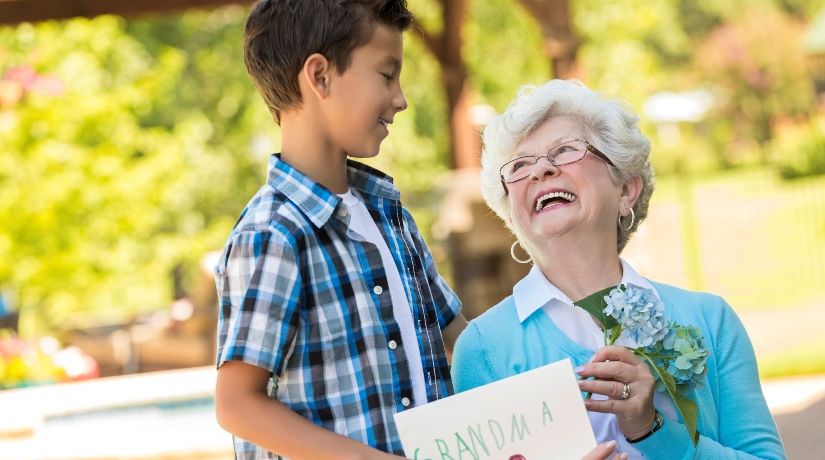In our electronic, computerized age, are there still reasons to teach our children to write an old-fashioned, handwritten thank-you note?

In the past several years there’s been much lamenting about the passing of the handwritten thank-you note. Its position on the watch list of endangered traditions is accompanied by the demise of cursive writing and the closing of post offices in small communities.
In an environment in which email, texting, Facebook messages and everything Internet have become increasingly dominant, is there any hope that the handwritten, sent-through-the-mail-with-a-stamp thank-you note will survive?
Rare, but still spotted!
A survey of 6,000 mothers found that only 30.7 percent always made their children write thank-you notes for gifts. That might be smaller than many of the etiquette gurus would like; but thankfully, while rare, this traditional courtesy is not extinct yet!
I myself have been privileged to be on the receiving end of a number of thank-you notes from young children. I think, for example, of the daughter of two longtime friends. I’ve received thank-you notes from her since she was a tiny tot. My gifts to her were small—frequently just a 50-cent yard-sale find that I couldn’t pass up—but always there was a thank you! I’m sure she didn’t think of them as such, but I found her notes heartwarming. (And I’m sure her grandparents treasure such notes as well!)
In an environment in which email, texting, Facebook messages and everything Internet have become increasingly dominant, is there any hope that the handwritten, sent-through-the-mail-with-a-stamp thank-you note will survive?
At first, the notes were written by her mother with some child scribbles on the left side of the card. A year or so later, she would include drawings and coloring. And then there was the day when I found lines drawn across the card to guide her early printing efforts.
It’s obvious her parents are committed to teaching good manners!
Reasons for keeping the practice alive
Considering how busy even the best-intentioned parents can be, it’s not surprising that this small courtesy sometimes ends up at the bottom of the to-do list. But here are a few reasons why some busy parents, like those mentioned above, continue to teach their children this gracious art of expressing thanks:
- Writing thank-you notes is a way of teaching your children the importance of being grateful and showing gratitude—a biblical principle. Jesus Christ taught that we should treat others the way we would want to be treated—the Golden Rule (Luke 6:31). Doesn’t everyone like to feel appreciated?
- Showing gratitude will help your children have better relationships with friends and family. Despite a culture that is increasingly coarse, good manners are still appreciated. Writing thank-you notes will give your children (and your family) a good reputation.
- Somewhat like how smiling makes you happier, thinking about the things you’re grateful for actually increases your happiness. This is according to a 2008 study by University of California, Davis, psychology professor Robert Emmons. He says, “Gratitude is the ‘forgotten factor’ in happiness research.”
- Writing thank-you notes helps your children learn and appreciate the value of time and money. Someone thought of them and spent time and/or money on them. An appreciation of this adds value to even the lowliest of gifts.
- Instilling the practice of thank-you notes in your child’s life can be beneficial when he or she becomes an adult. Many people forget to send a thank-you note after a job interview, but the practice is still considered essential. Some employers have even been known to hire a person because of receiving a thank-you card!
- A handwritten note offers the opportunity to practice penmanship and composition in the home environment. This extracurricular project can enhance your child’s progress in schoolwork.
Nurturing a neglected art
Writing thank-you notes need not be a burdensome task for parents or their children. Here are some ideas to make it enjoyable and fun:
- Introduce the assignment with a positive, enthusiastic approach. Focus on the niceness of the gift or service your child has been given and how happy the giver will be to know that your child likes it.
- Have a box with special art supplies (fun paper, crayons, markers, stickers, etc.) that are only used for making cards.
- Let your children help you shop for stationery or other supplies.
- Work with your child on the project.
- Create a pleasant atmosphere by playing music or serving a special drink or snack (that isn’t messy) to enjoy while you’re working.
As well as keeping it fun, make sure your expectations are within your children’s skill levels and abilities. Etiquette guru Emily Post’s website suggests that 3- to 5-year-olds might scribble on the card, draw a picture of themselves with the gift or even sign their name, while 6- to 10-year-olds can contribute to the actual writing. Older children and teens can start taking more responsibility for the process, but you’ll still want to check to make sure it gets done.
Room for a hybrid?
What about using technology in the thank-you process? While a handwritten note of thanks is still the preferred vehicle, depending on the recipient, you might consider letting your child use computer software to create a printed card or a website to create an electronic card. If all else fails, send an email message.
Ultimately, expressing gratitude and acknowledging the thoughtfulness of the giver is the most important thing.
Read more about the benefits of thankfulness and the problems with its opposite in our article “Unthankfulness: A Sign of Perilous Times.”




